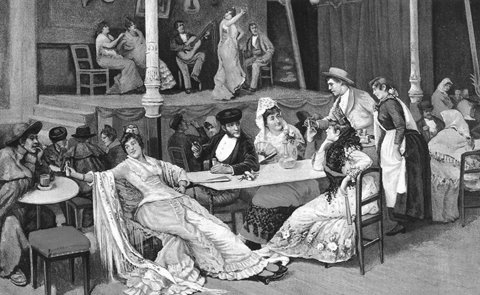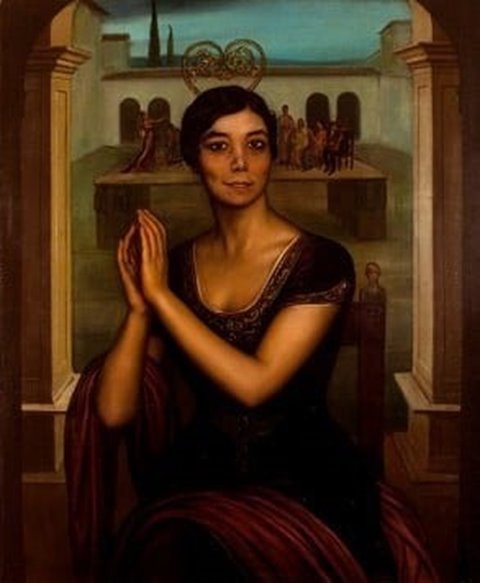The “Café Cantantes”
At the end of the 19th century, flamenco was already a widely spread art in Andalusia. In Cadiz, figures such as el Chiclanita, Dolores and Alonso del Cepillo, José de los Reyes and el Negro del Puerto arise and there is record of singing centres such as los Puertos, San Fernando, Sanlúcar, Chiclana and Arcos de la Frontera.
Jerez de la Frontera also deserves to be mentioned, another of the original centres of flamenco, and above all, the neighbourhoods of San Miguel and Santiago. Manuel Soto Loreto, Antonio Chacón y El Torre come from these neighbourhoods.
However, a little before these flamenco maestros came onto the scene, the history of flamenco affronted a crucial moment. In the same period, singers such as Tomás "El Nitri", Silverio Franconetti and Juan Breva appeared. Amongst them, a fierce competition arose but the Primer Llave de Oro del Cante (first golden key of song) in history is awarded to Tomás, who received this prize as a gift for his skill during a party. In this environment, Silverio Franconetti opened a café cantante in 1881 at Calle Rosario number 4 in Seville.
The Café cantantes were night bars, where spectators drank and enjoyed a great music show. According to the singer Fernando de Triana, there was already a café cantante in Sevilla, which was renovated and reinaugurated with the name Los Lombardos (the name of a Verdi's opera).
In café cantante of Silvio Franconetti there was a very competitive environment betweem flamenco singers. Silvero himself challenged the best singers in public.
These bars became a trend and emerged the figure of the professional flamenco singer, which was the base for the development of flamenco as an art.
Despite the reputation of these cafés, a certain sector of this genre tried to isolate this art within the oldest minorities: Los Gordos de Alcalá, a family from Triana whose major representative is Joaquín “el de la Paula” and “Agujetas el Viejo”.
During this time, the following artists triumphed on stage: “Las Coquineras”, don Antonio Chacón,“La Macarrona”, Francisco Lema "Fosforito el Viejo”, “el Perote”, “El Macaca”, “El Mochuelo”, “El Diana”, “El Canario”, Cayetano Muriel “el Niño de Cabra”, La Rubia de las Perlas” or “el Garrido de Jerez”, amongst many others.
In the 20th century, an unequable generation took over flamenco.
Names such as Pastora Pavón Cruz "La Niña de los Peines", Arturo and Tomás Pavón, Manuel Torre, Manuel Vallejo “El Gloria”, Juanito Mojama, Bernardo “el de los Lobitos”, “El Niño Escacena”, Pepe el de la Matrona, Manuel Centeno, “El Cojo de Málaga”, Juan Varea, Sebastián “el Peña”, “el Niño de Marchena”, Manolo Caracol, Tía Anica “la Piriñaca”, Tío Gregorio “el Borrico” y Juan Talega began to be known.

Un café cantante (1850). Oil painting by José Alarcón Suárez.

La Niña de los Peines (1917-1918), Julio Romero de Torres.